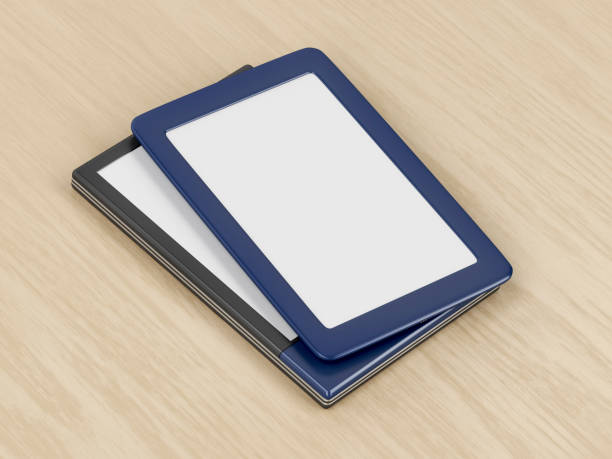Flexible Display Revolution: How E-Paper is Quietly Disrupting Consumer Electronics
The world of consumer electronics is witnessing a subtle yet significant transformation as e-paper technology moves beyond e-readers to reshape our interaction with digital devices. Unlike traditional LCD or OLED screens, e-paper displays reflect light like ordinary paper, consuming minimal power and offering unparalleled readability in direct sunlight. This technology, once limited to Kindle devices, is now finding its way into smartphones, retail signage, and even wearables. As manufacturers seek more sustainable and eye-friendly alternatives to conventional screens, e-paper's evolution represents one of the most underappreciated disruptions in modern computing interfaces.

The Science Behind the Paper-Like Experience
E-paper technology—sometimes called electronic ink or e-ink—works fundamentally differently from the screens illuminating our daily lives. Traditional displays emit light directly into our eyes, causing the strain many experience after prolonged usage. E-paper instead contains millions of microcapsules filled with positively charged white particles and negatively charged black particles suspended in a clear fluid. When an electric field is applied, these particles move to the surface to form text or images, creating the appearance of printed paper.
This reflective rather than emissive display technology means e-paper only consumes power when changing what’s displayed—not to maintain the image. The result is remarkable battery efficiency, with some e-paper devices running for weeks on a single charge. The technology also continues improving, with color e-paper displays emerging despite previous limitations to monochrome implementations.
Beyond Books: E-Paper’s Expanding Ecosystem
While Amazon’s Kindle remains the flagship e-paper product for most consumers, the technology has quietly expanded into diverse applications. The Hisense Phone A7, for instance, integrates an e-paper display that allows users to switch between traditional LCD and eye-friendly e-paper modes, extending battery life dramatically for reading-intensive tasks.
In retail environments, digital price tags utilizing e-paper have become increasingly common, allowing stores to update pricing remotely while consuming minimal energy. Companies like SES-imagotag and Pricer have deployed millions of these tags globally, reducing paper waste and labor costs associated with traditional price labels.
Perhaps most intriguing is e-paper’s move into wearable technology. The Withings ScanWatch Horizon incorporates e-paper elements in its hybrid design, allowing it to maintain an always-on display without sacrificing its two-week battery life. Similarly, Garmin’s line of outdoor smartwatches uses memory-in-pixel technology closely related to e-paper to maintain visibility in direct sunlight—crucial for outdoor activities.
The Sustainability Factor
E-paper’s minimal power consumption translates to significant environmental benefits when deployed at scale. A typical e-paper display uses up to 90% less energy than an equivalent LCD panel displaying static information. This efficiency becomes particularly relevant as companies and governments emphasize reducing the carbon footprint of consumer electronics.
For devices like e-readers, the environmental calculus is compelling. A study by the Rochester Institute of Technology suggested that reading approximately 22.5 books on an e-reader produced fewer emissions than purchasing the same books in physical form. However, the full lifecycle assessment remains complex, particularly considering the mining required for electronic components and end-of-life recycling challenges.
In commercial contexts, the sustainability benefits appear more straightforward. Electronic shelf labels in retail settings can last 5-7 years on a single battery, dramatically reducing waste from traditional paper labels. Similarly, e-paper billboards consume a fraction of the electricity needed for LED displays, potentially transforming outdoor advertising’s environmental impact.
Technical Limitations and Innovative Solutions
Despite its advantages, e-paper technology isn’t without drawbacks. Refresh rates remain significantly slower than conventional displays, making video playback and animation impractical on pure e-paper displays. Color reproduction, while improving, still lacks the vibrancy of OLED or even LCD screens. These limitations have historically confined e-paper to specific niches rather than mainstream adoption.
However, companies are actively addressing these constraints through innovative approaches. E-Ink, the leading manufacturer of electronic paper displays, has developed Advanced Color ePaper (ACeP) technology that can produce thousands of colors without sacrificing the power efficiency that makes e-paper attractive. Their Kaleido technology, now in its third generation, has brought color e-paper to e-readers priced around $300-400, though still with compromises in resolution and richness compared to color printing.
Another promising development comes from researchers at Chalmers University of Technology, who have created an ultra-thin, flexible e-paper capable of displaying structural color—similar to how butterfly wings create vibrant hues without pigments. This approach could eventually yield e-paper displays with exceptional color quality while maintaining energy efficiency.
The Future Interface: Where E-Paper Fits
As e-paper technology continues evolving, its potential extends well beyond current implementations. Several trends suggest where the technology might head next.
Architectural integration represents one exciting frontier. Companies like Mpirico are developing e-paper materials that can be incorporated directly into building facades, allowing structures to change appearance or display information while consuming minimal energy. These applications could transform urban environments without contributing significantly to light pollution or energy consumption.
In personal computing, dual-display devices that pair e-paper with traditional screens offer a compelling compromise. Devices like the Lenovo ThinkBook Plus (priced around $1,200) feature an e-paper screen on the lid for note-taking and reading, complementing the conventional internal display. This hybrid approach acknowledges e-paper’s strengths while working around its limitations.
Perhaps most intriguing is e-paper’s potential in the emerging ambient computing paradigm. As we move toward less intrusive, more contextual interfaces, e-paper’s ability to display information without demanding attention through brightness could prove invaluable. Smart home control panels, subtle notification surfaces, and information displays that blend into environments rather than dominating them all represent promising applications.
The quiet e-paper revolution won’t replace our vibrant, high-refresh displays for video consumption or gaming. Instead, it’s carving out an expanding niche where its unique properties—minimal power consumption, exceptional readability in bright conditions, and reduced eye strain—matter most. As we become increasingly conscious of both energy usage and digital wellness, e-paper’s paper-like qualities may prove more revolutionary than we initially recognized.





